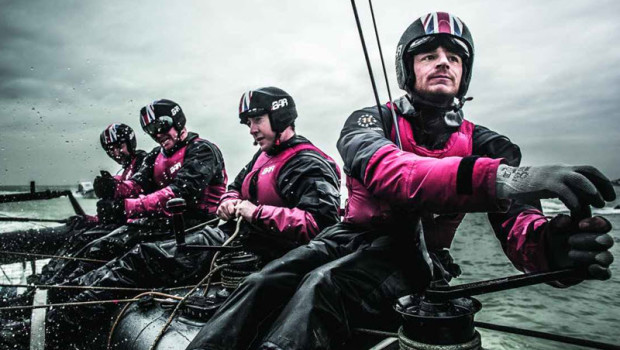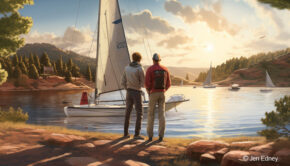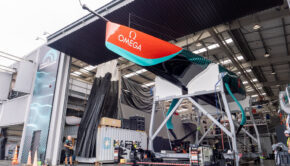The Ideal America’s Cup?
Published on August 11th, 2015
To return sailing’s pinnacle event to its former glory, the current stakeholders need to bring back a few traditions. By Gary Jobson in the Jul/Aug edition of Sailing World magazine…
Several years ago, I was sitting in an audio studio with Walter Cronkite, the legendary news anchor. We were working on a film narration, and he was to speak first according to the script. Cronkite’s first words in his distinct gruff voice were: “The America’s Cup.” As he spoke, with perfect diction and impressive authority, I felt humbled. I wondered how I, with my slightly nasal tone and New Jersey accent, would hold up alongside such an extraordinary narrator. The recording session went fine, but the way he orated those three words left a lasting impression. He made the America’s Cup sound colossal and important.
Over the past few years, however, there have been so many radical changes to this venerable event, to the point that it somehow no longer seems as important today, as if unworthy of Cronkite’s blessing. As I recently pondered this point, I also wondered what the Cup’s current and future stakeholders must do to return the longest-running sporting event to its past glory.
The primary author of the Cup’s original Deed of Gift, George Schuyler, envisioned an international challenge regatta that would be run under the terms of mutual consent. He wanted the competitors to be flexible so they would embrace new designs. Schuyler wrote three versions of the Deed between 1857 and 1887, and there have been modifications to this guiding document over the years to allow smaller boats, such as the 12-Meters, as well as dispensation for yacht clubs hailing from inland waters. The underlying premise, however, was always to encourage innovative yacht design and good competition between nations under the “strictest fair play.”
Schuyler may not have envisioned the use of foiling, wing-sail catamarans racing at high speed, but John Cox Stevens, New York YC’s founding commodore, would surely have endorsed the use of multihulls—his own catamaran was playfully named Double Trouble. Even six-time Cup defender Nathanael Greene Herreshoff designed a series of multihulls. The use of twin and triple-hulled craft are in line with the Cup’s original vision for fast, leading-edge vessels of the day. Big, beautiful, swift, and marvelous boats will attract newcomers to sailing. This was true of the J Class in the 1930s, 12-Meters from 1958 to 1987, and the America’s Cup Class that raced between 1992 and 2007. While it’s heart warming to see many past Cup boats on the water today, I seriously doubt we’ll ever see the AC72s sailing again. – Read on
————————–
Look for Gary Jobson’s monthly column ‘Jobson Report’ in Sailing World magazine.









 We’ll keep your information safe.
We’ll keep your information safe.